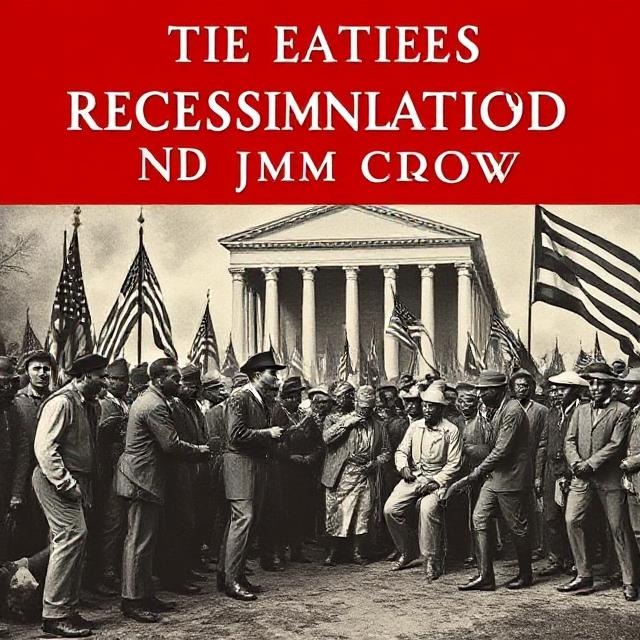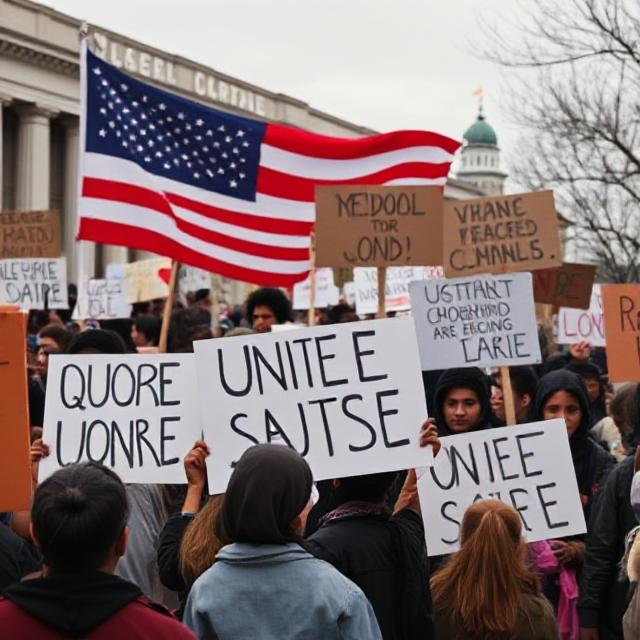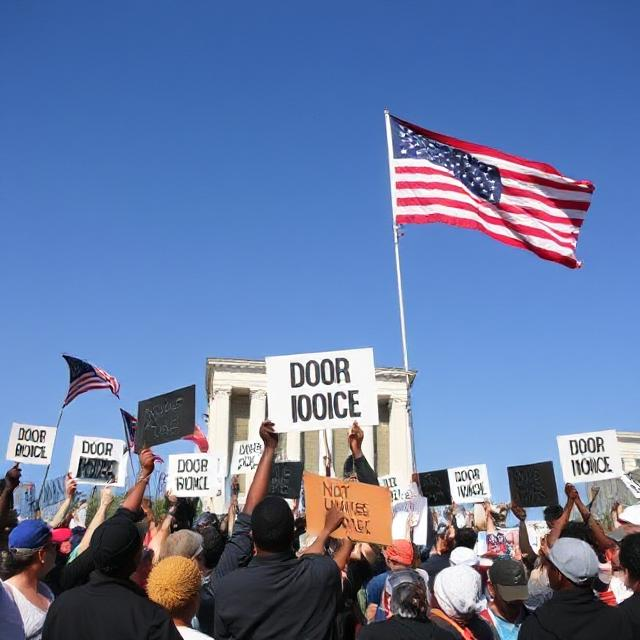Racism in the United States is a complex and pervasive issue that has evolved over centuries, affecting various aspects of society, including politics, economics, education, and culture. It encompasses individual prejudice, institutional discrimination, and systemic inequalities based on race and ethnicity. The historical roots of racism in the U.S. can be traced back to the colonial period and the transatlantic slave trade, which laid the foundation for enduring racial hierarchies.
Historical Context

Colonial Era and the Slave Trade
The origins of racism in the U.S. can be linked to the European colonization of North America in the 17th century. The establishment of the Atlantic slave trade in the early 1600s led to the forced transportation of millions of Africans to the Americas. Enslaved individuals were dehumanized and treated as property, which justified their exploitation and mistreatment.
The Role of Slavery
Slavery became a cornerstone of the economy, particularly in the Southern states, where plantations relied on slave labor for the production of cash crops like tobacco, rice, and cotton. The economic benefits derived from slavery entrenched racial hierarchies, leading to the development of racial ideologies that justified the subjugation of Black people.
Racial Stereotypes
Racial stereotypes emerged during this period, portraying Africans as inferior and uncivilized. These stereotypes were propagated through literature, art, and public discourse, reinforcing the notion of white superiority.
Institutionalization of Slavery
By the 18th century, slavery became deeply entrenched in American society, particularly in the Southern states. Laws known as the Slave Codes were enacted to control enslaved populations and maintain white supremacy. These codes restricted the rights of enslaved people and codified racial discrimination.
Slave Codes
Slave Codes varied by state but generally included provisions that:
- Prohibited enslaved individuals from learning to read and write.
- Restricted their movement and assembly.
- Allowed for severe punishment for disobedience or escape attempts.
Resistance and Rebellion
Despite oppressive conditions, enslaved individuals resisted their circumstances through various means, including work slowdowns, sabotage, and escape. Notable rebellions, such as Nat Turner’s Rebellion in 1831, highlighted the desire for freedom and the lengths to which enslaved people would go to achieve it.
Abolition and Civil War
The abolitionist movement gained momentum in the 19th century, advocating for the end of slavery. Key figures such as Frederick Douglass, Harriet Tubman, and Sojourner Truth emerged as leaders in the fight for emancipation. The Civil War (1861-1865) ultimately led to the abolition of slavery with the ratification of the 13th Amendment in 1865, but the end of slavery did not eradicate racism.
The Emancipation Proclamation
President Abraham Lincoln issued the Emancipation Proclamation in 1863, declaring the freedom of all enslaved people in Confederate-held territory. While it did not immediately free all enslaved individuals, it marked a significant turning point in the war and the fight for abolition.
Post-War Challenges
After the war, newly freed African Americans faced significant challenges, including poverty, lack of education, and violent backlash from white supremacists. The promise of land and economic opportunity often went unfulfilled, leading to continued cycles of disenfranchisement.
Reconstruction and Jim Crow

Reconstruction Era (1865-1877)
Following the Civil War, the Reconstruction era aimed to integrate formerly enslaved individuals into society and secure their rights. The 14th and 15th Amendments granted citizenship and voting rights to African Americans. However, the period was marked by significant resistance from white supremacist groups, leading to violence and intimidation.
Freedmen’s Bureau
The Freedmen’s Bureau was established in 1865 to assist formerly enslaved individuals in transitioning to freedom. It provided food, housing, education, and legal assistance, but faced opposition from Southern whites.
Rise of White Supremacy
Organizations like the Ku Klux Klan emerged during this period, using terror and violence to undermine the rights of African Americans and restore white dominance. Lynching and other forms of racial violence became common.
Jim Crow Laws
The end of Reconstruction ushered in the Jim Crow era, characterized by the implementation of laws that enforced racial segregation and disenfranchised African Americans. These laws mandated separate facilities for whites and blacks in public spaces, schools, and transportation, perpetuating systemic racism.
Legalized Segregation
Jim Crow laws established a legal framework for segregation, affecting all aspects of life, including education, employment, and public services. The Supreme Court’s ruling in Plessy v. Ferguson (1896) upheld the constitutionality of racial segregation under the “separate but equal” doctrine.
Disenfranchisement
Southern states employed various tactics to disenfranchise African American voters, including literacy tests, poll taxes, and understanding clauses. These measures effectively suppressed Black political participation for decades.
Civil Rights Movement
The civil rights movement of the 1950s and 1960s sought to dismantle Jim Crow laws and secure equal rights for African Americans. Key events included the Montgomery Bus Boycott, the March on Washington, and the Selma to Montgomery marches.
Key Figures
Prominent leaders of the civil rights movement included:
Martin Luther King Jr.: Advocated for nonviolent resistance and civil disobedience to combat racial injustice.
Rosa Parks: Her refusal to give up her bus seat sparked the Montgomery Bus Boycott, a pivotal moment in the struggle for civil rights.
Malcolm X: Promoted Black nationalism and self-defense, emphasizing the need for racial pride and empowerment.
Legislative Achievements
The movement led to significant legislative changes, including:
Civil Rights Act of 1964: Prohibited discrimination based on race, color, religion, sex, or national origin in employment and public accommodations.
Voting Rights Act of 1965: Eliminated barriers to voting for African Americans, ensuring their right to participate in elections.
Contemporary Racism

Systemic Racism
Despite legal advancements, systemic racism persists in various forms, affecting education, employment, housing, and criminal justice. Structural inequalities continue to disadvantage people of color and perpetuate cycles of poverty.
Education Disparities
Racial disparities in education are evident in funding, access to quality schools, and graduation rates. Predominantly Black and Latino schools often receive less funding and resources, contributing to educational inequities.
Employment Inequities
Discrimination in hiring practices and workplace environments continues to affect people of color. Studies show that resumes with traditionally white-sounding names receive more callbacks than those with Black-sounding names, highlighting ongoing biases.
Criminal Justice System
Racial disparities in the criminal justice system are stark, with people of color disproportionately affected by policing practices, sentencing, and incarceration rates. The War on Drugs has particularly targeted Black and Latino communities, leading to mass incarceration.
Police Violence
Incidents of police violence against unarmed Black individuals have sparked national outrage and protests. High-profile cases, such as the killings of George Floyd, Breonna Taylor, and Eric Garner, have brought attention to systemic issues within law enforcement.
Mass Incarceration
The U.S. has the highest incarceration rate in the world, with a disproportionate number of incarcerated individuals being people of color. Policies such as mandatory minimum sentencing and three-strikes laws have contributed to this crisis.
Social Movements
Contemporary movements, such as Black Lives Matter, seek to address systemic racism and advocate for social justice. These movements have mobilized grassroots activism and raised awareness of racial injustices in society.
Black Lives Matter
Founded in 2013, the Black Lives Matter movement emerged in response to police violence and systemic racism. It advocates for policies addressing racial inequality, police reform, and accountability for law enforcement.
Intersectionality
Modern social movements emphasize the importance of intersectionality, recognizing how race, gender, sexuality, and class intersect to shape individuals’ experiences of oppression and privilege.
Conclusion
Racism in the United States is a deeply rooted and multifaceted issue that has evolved over centuries. While significant progress has been made through civil rights legislation and social movements, systemic racism continues to affect various aspects of society. Addressing these challenges requires ongoing commitment to social justice, education, and policy reform to create a more equitable and inclusive society for all.


